Ode To Autumn Summary by John KeatsJohn Keats, a romantic poet, wrote the poem "Ode to Autumn" in 1819. It is frequently recognised as a masterpiece of English literature and is one of Keats' most well-known and celebrated works. The poem is an ode, a lyric poem typically written adoring a subject, setting, or object. In his poem "Ode to Autumn," Keats extols the autumnal season's bounty, splendour, and transience. The poem is divided into three stanzas, each highlighting a different feature of fall and a concluding stanza considering life's revolving-door nature and the certainty of death. Keats paints a rich and evocative depiction of Autumn by using vivid imagery, sensory details, and literary methods like personification and allusion, making the poem a timeless celebration of nature and the glory of life. 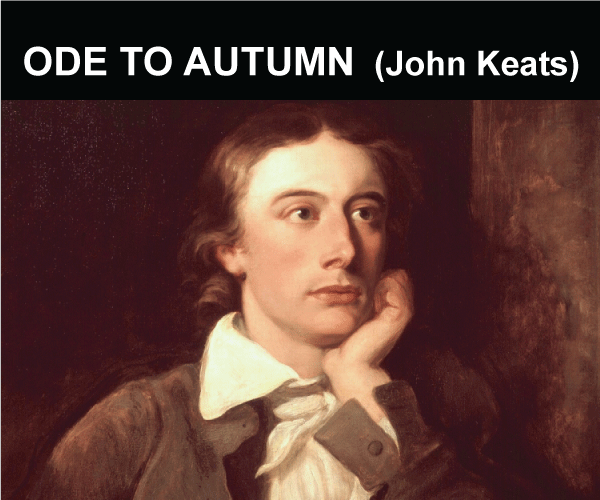
Stanza 1: A Description of the Ripeness and Fullness of AutumnThe first verse of "Ode to Autumn" establishes the mood for the rest of the poem by describing the fullness and ripeness of the season. The stanza is summarised as follows: The first line of the stanza asks Autumn, who has been personified by the speaker, to 'conspire' with the speaker to write a song. The verb "conspire" implies that the speaker and Autumn are intimately involved with one another. The speaker then uses images of fruit and crops to illustrate Autumn as a time of abundance. The "maturing sun" is described by the speaker as aiding in the ripening of apples, gourds, and hazelnuts. While "plump the hazel shells" emphasises the ripeness of the harvest, "swell the gourd" emphasises the season's abundance. The speaker mentions how the grapevines are "laden" with fruit and how the bees are "busy" gathering nectar, characterising Autumn as a season of growth and fertility. The word "clammy" emphasises the sticky, sweet, full sensation in the cells where the bees store their honey. The richness of the crop and the beauty of the natural world are highlighted in this stanza's overall vivid and sensory-rich portrayal of Autumn as a season of growth, abundance, and ripeness. Stanza 2: Depiction of Autumn's Labor and ActivityThe second stanza, "Ode to Autumn", emphasises the season's richness and ripeness to the work and exertion required to bring the crop. The stanza is summarised as follows: The speaker addresses Autumn at the beginning of the stanza, asking her to view and analyse her work. "watchest" implies that Autumn actively engages in the harvest rather than only acting as a bystander. The speaker then describes the work and activity of harvest time. Workers are "reaping and singing" in the fields as they bring in the crop. The verb "singing" conveys a sense of celebration, delight, and the labour-intensive nature of the harvest. The next stanza describes the granaries, where the harvest is kept for the winter. The speaker talks about how the granaries are "bursting" with the abundance of the harvest and how the food stored for the winter will be made up of grains and fruits. 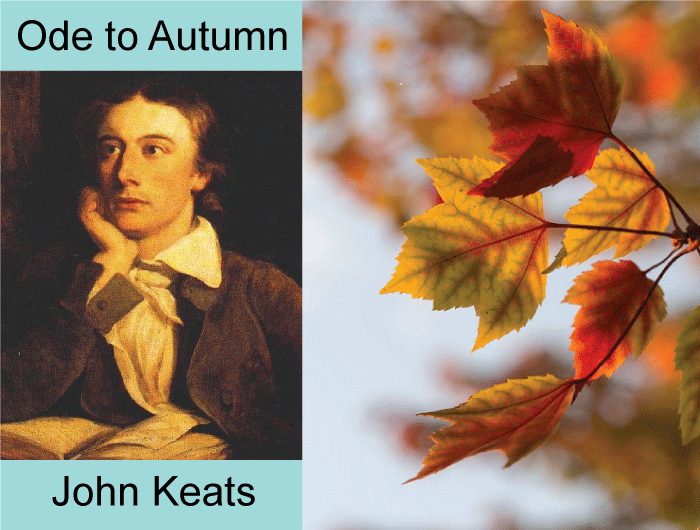
This stanza paints an image of Autumn as a time of celebration and bounty together with hard work and labour. A rich and all-encompassing picture of the season is painted through sensory details, such as the sound of singing and the bursting of the granaries. Stanza 3: Description of the Peaceful and Comforting Characteristics of AutumnThe third stanza of "Ode to Autumn" switches the emphasis once more, this time to the serene and comforting characteristics of the season. The stanza is summarised as follows: The speaker begins the verse by describing how a "soft-dying day" characterises the autumnal season. While "dying day" emphasises the cyclical nature of life and the passage of time, the adjective "soft" suggests a sense of gentleness and calm. The speaker describes the countryside at night, as the sun sets and the shadows grow longer. Using the word "rippled" to describe the grain in the fields conveys movement and texture. The word "drows'd" used to describe the setting sun conveys a sense of ease and tiredness. 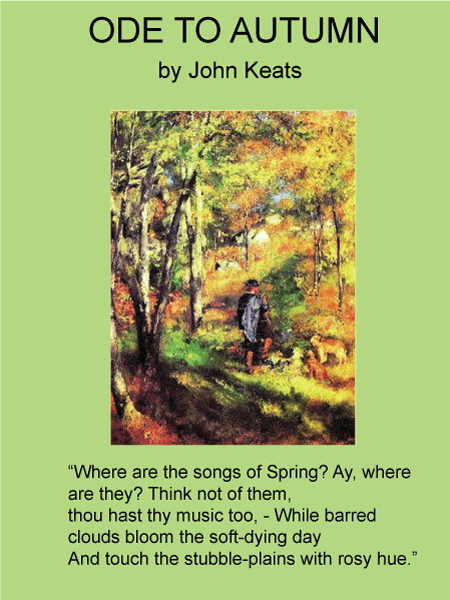
The last line describes a variety of sounds that can be heard in the countryside at twilight, including the "whistling" of redbreast robins and the "twittering" of swallows. These sounds evoke a sense of calm and peace and convey that Autumn is a time for quiet reflection. The gentle fading of the day and the calming sounds of nature create a serene and restful mood, which is how this verse portrays Autumn as a season of tranquilly and tranquillity. A vibrant and all-encompassing picture of the season is painted through sensory elements, such as grain rippling and the robin's whistling. Stanza 4: An Examination of Ageing and MortalityThe poem "Ode to Autumn" ends with its fourth and last stanza, which dwells on time and mortality. The stanza is summarised as follows: The speaker personally addresses Autumn at the beginning of the verse, who then inquiries about her place in the cycle of life and death. The speaker wonders whether Autumn is "a season of mists and melancholy" or "a time of mists and mellow fruitfulness." The speaker next discusses the inevitable passing of time and the coming of winter. The previous stanzas "maturing sun" has turned into the present day's "soft-dying day," and the crops that were once so plentiful are now "laden with fruit" that will soon rot and die. Even the songs of the harvesters will soon be forgotten due to the inescapable cycle of life and death. 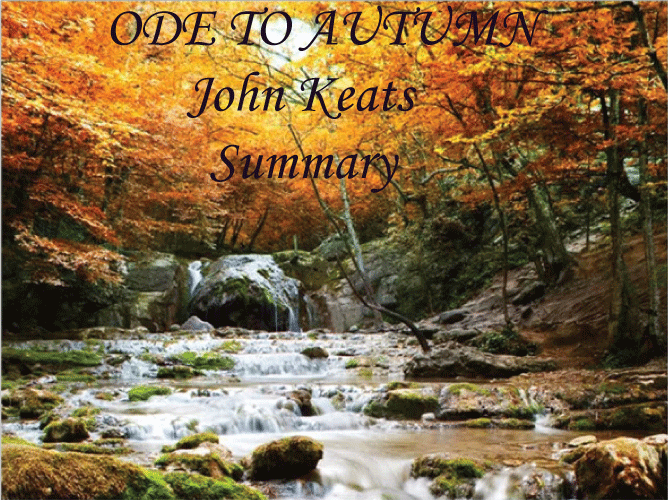
The speaker acknowledges the certainty of his mortality as the verse comes to a close. The speaker will soon pass away, and his melodies will be forgotten, just like the crops and the harvesters. The poem's last lines reflect on the cycle of life and death and acknowledge its beauty and inevitable nature. This stanza concludes the poem by considering the cyclical cycle of life and death and recognising the fleeting nature of human existence. The poem is a potent and timeless homage to the natural world and the human experience because it uses poetic language and images to evoke a sense of beauty and wonder, even in the face of mortality. Themes in "Ode to Autumn""Ode to Autumn" is a deep and intricate poem that tackles various issues. The poem's main ideas are as follows: 1. Transience One of the poem's main themes is that everything in life is transient and subject to change. Autumn, which heralds the change from summer to winter and the eventual deterioration of the natural world, is a prime example of this transience with its profusion of ripe fruit. 2. Beauty "Ode to Autumn" is also a celebration of the splendour of the natural world, despite its topic of transience. Keats paints a rich and immersive portrayal of Autumn that captures its particular beauty using sensory-rich language to describe the season's sights, sounds and smells. 3. Death and Time The poem also considers the passing of time and the certainty of death. Keats acknowledges this process's beauty and inevitable nature as he explores these topics via seasonal changes and the life-and-death cycle. 4. Labor and Activity The idea of labour and activity, particularly regarding the harvest, is another poem's focus. Keats captures the vigour and intensity of the season by describing the laborious rejoicing that goes into gathering the harvest. 5. Tranquillity Lastly, "Ode to Autumn" also reflects on peace and contentment. Keats reflects on the delicate features of Autumn even as it ushers in the chilly and dark winter months by using the mellow dimming of the day and the calming sounds of nature to create a sense of peace. Writing Techniques Used in "Ode to Autumn"John Keats' "Ode to Autumn" is a superb work of Romantic poetry that employs various literary techniques to create a complex and compelling world. The poem makes use of the following major literary devices: 1. Personification Personification is one of the poem's most notable literary methods, in which the natural world is given human characteristics. Autumn is represented as a character who is "sitting carelessly on a granary floor," for instance, or as a "close-bosom friend" who is "conspiring with" the sun and the birds. 2. Imagery Keats employs vivid and detailed imagery to give the reader a sensory experience. Using sensory details, he paints a mental picture of the "fruit-tree[s] bending with apples" and the "swallows twittering in skies." 3. Metaphor Keats compares several facets of Autumn to other objects or concepts using metaphor. As an illustration, he refers to the sun as a "maturing sun," implying that it is similar to a fruit that ripens over time. 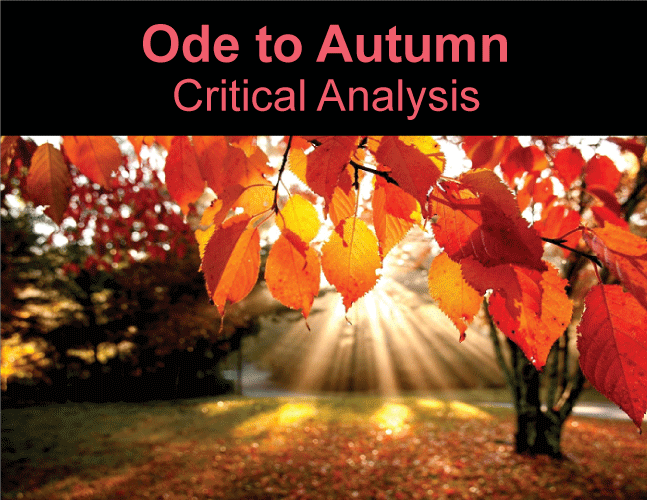
4. Symbolism The poem also contains a lot of symbols, which are things or notions that stand in for something else. As an illustration, the "harvest" represents wealth and productivity, while the "maturing sun" represents the passage of time and the impending winter. 5. Alliteration Keats used alliteration, which is the repeating of consonant sounds, to give the poem a sense of rhythm and melody. He uses the repeated "m" sound to create a mellow and flowing rhythm, for instance, in the poem "Season of mists and mellow fruitfulness." 6. Onomatopoeia Finally, to add an atmosphere and mood to the poem, Keats also used onomatopoeia or words that mimic the sound they represent. For instance, he uses the term "Twitter" to evoke the sound of the birds chirping when he writes, "And gathering swallows twitter in the skies." Analysis and Interpretation of "Ode to Autumn"John Keats' "Ode to Autumn" is a deep and engaging poem that paints a realistic and sensual picture of the season. The poem mediates the ideas of transience, beauty, and mortality, yet it can be read in various ways. The poem opens with a sensory-rich description of the Autumn season, utilising personification and imagery to paint a vivid picture of the natural world. The opening verse describes the "mists and mellow fruitfulness" and the "plump[ed]" "hedge-crickets" singing in the "drowsy" fields in the great sensory description. This first stanza praises Autumn's bounty and productivity by portraying it as a time of plenty and ripeness. 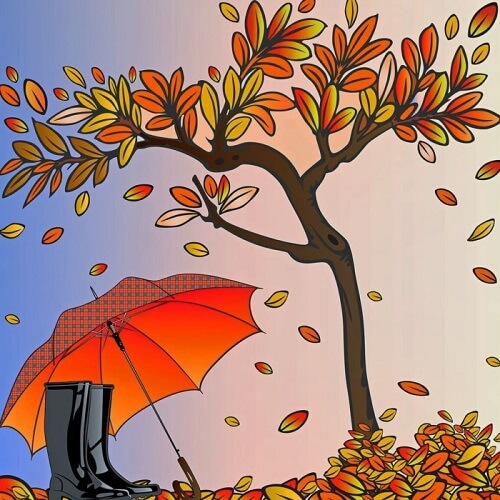
The hard effort that goes into the harvest is described in the second verse, which switches the emphasis to the labour and activity of the season. Here, Keats uses sensory language to evoke the harvest's sounds and smells, evoking the vigour and vitality of the time of year. He paints an image of the industrious farmers and labourers who are essential to the season's bounty by describing the "winnowing wind" and the "hook[s]" and "reaping-hook[s]" used to gather the crop. The third stanza is an analysis of how peaceful and comforting Autumn is. Keats describes the "laden bee[s]" and the "full-grown lambs" as they graze in the fields to convey the sights and sounds of serene and tranquil countryside. In this stanza, the poem's tone softens and becomes more reflective as Keats muses on the soothing qualities of Autumn even though it heralds the arrival of the chilly winter months. The final stanza examines time's passing and the certainty of death. Here, Keats acknowledges this process's beauty and inevitable nature while using imagery and metaphor to convey a feeling of the cycle of life and death. He uses the idea that everything in life is transitory and prone to change by comparing Autumn to a "soft name" that disappears as the season progresses. Overall, "Ode to Autumn" is a superb example of Romantic poetry that uses various literary tropes. Generally speaking, "Ode to Autumn" is a superb example of Romantic poetry, utilising various literary techniques to create a rich and immersive world that portrays the complexity and beauty of the natural world. The poem can be read in various ways, but at its heart, it celebrates the fleetingness and beauty of existence and acknowledges the certainty of death. Influence of Keats's "Ode to Autumn" on Romanticism and PoetryOne of the best poems ever written in English, "Ode to Autumn", has a tremendous impact on both Keats' poetry and the Romantic movement. "Ode to Autumn" is the last poem in a collection of odes that Keats wrote in 1819. These poems, regarded as some of Keats' best, reveal the poet's obsession with beauty, the natural world, and the fleeting aspect of existence. Because it demonstrates Keats' talent for eloquently capturing the spirit of a season and delving into intricate themes of life, death, and the cycle of nature, "Ode to Autumn" is frequently regarded as the pinnacle of his creative accomplishments. "Ode to Autumn" is a prime example of Romanticism in terms of its main topics and ideas. The poem highlights the value of sensory perception and imagination while praising the beauty and diversity of nature. Additionally, it emphasises how fleeting life is and implies that the passage of time is an essential component of the natural cycle. The essential principles of Romanticism are this stress on nature, imagination, and the beauty of the natural world. Overall, "Ode to Autumn" is important to Keats' poetry and the Romantic movement since it perfectly captures its major topics, literary devices, and philosophical tenets. It is a classic piece of writing that resonates with readers today.
Next TopicOliver Twist Summary
|
 For Videos Join Our Youtube Channel: Join Now
For Videos Join Our Youtube Channel: Join Now
Feedback
- Send your Feedback to [email protected]
Help Others, Please Share









